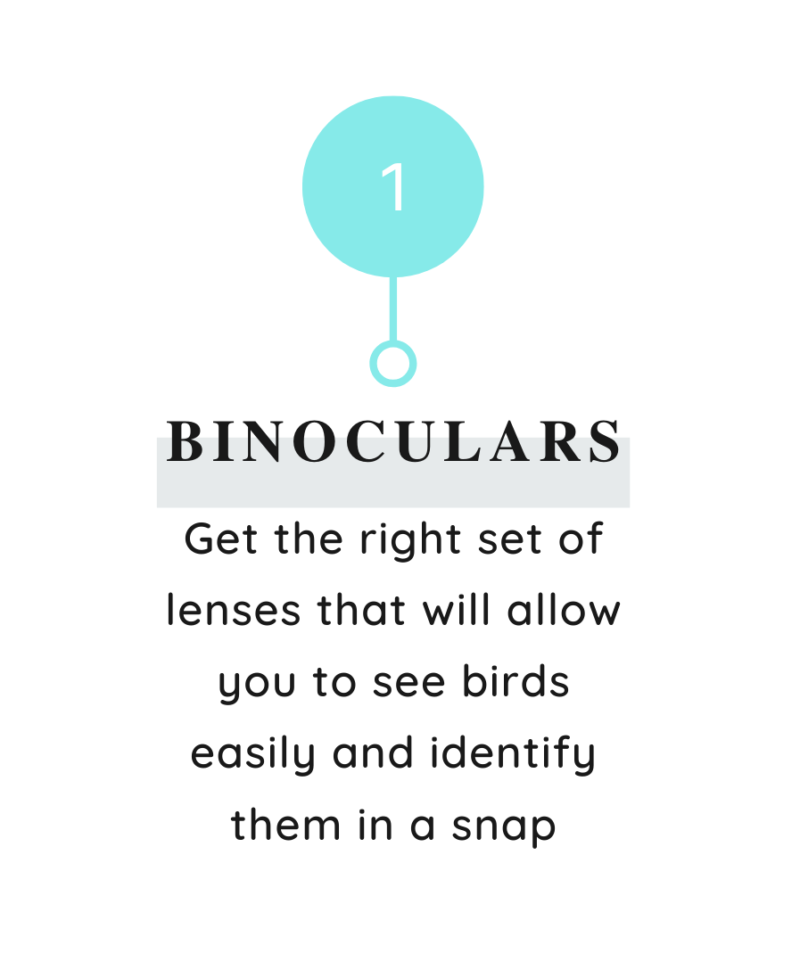
You’ll need a pair of binoculars to better see birds. These small but mighty lenses are your eyes to the world of birds, and a good set of binoculars makes for a great birding outing.
There are three things you’ll want to do with your binoculars before you start using them.
- Adjust your binoculars so they are properly focused to your eyes. There’s nothing worse than having a slightly unclear image when looking for birds!
- Spend some time developing your hand-eye coordination to spot birds through your binoculars more easily. This takes practice, but try finding a stationary object first, then move to moving objects before trying this out on birds
- Look for birds with just your eyes first, then find them with your binoculars. You don’t need to ID birds just yet – get comfortable with your binoculars first!
A bird field guide is the next most important tool you’ll need for birdwatching and identifying birds.
These books are packed with loads of info about and images of birds, including where you’ll see them, identifying markers, behavior, sounds, and more. Nearly every region of the world has a field guide displaying all the potential birds you could find there.
Importantly, before you take your guide to go look for birds, take some time to get acquainted with the structure and format of the book. This is essential in reducing overwhelm and enjoying birding more.
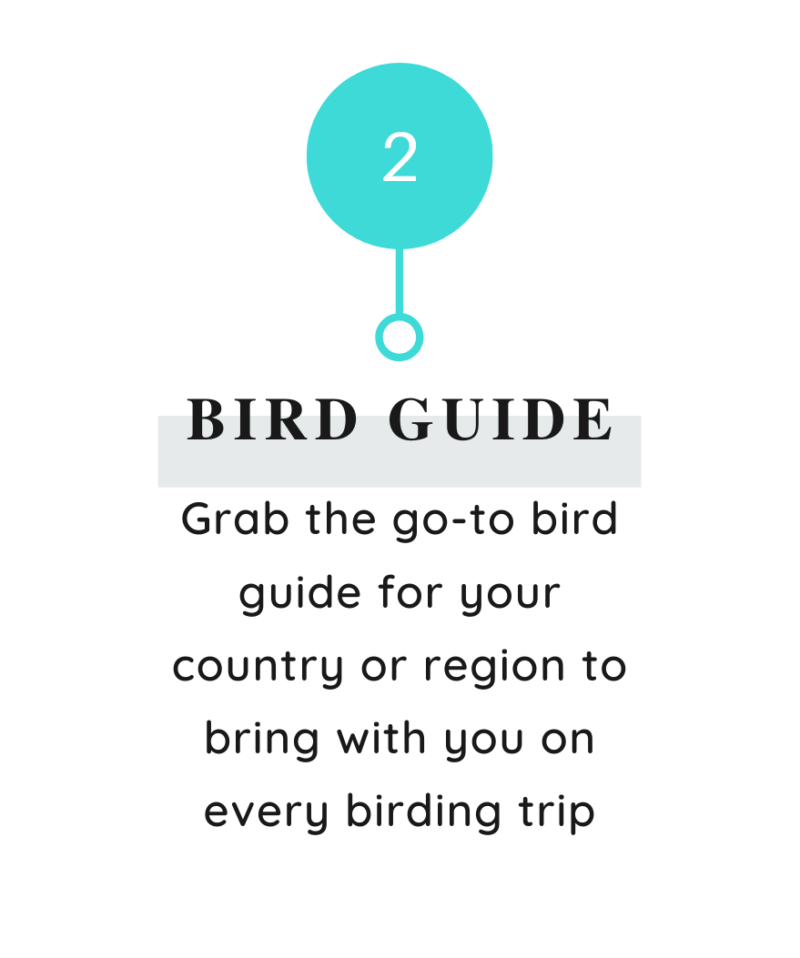
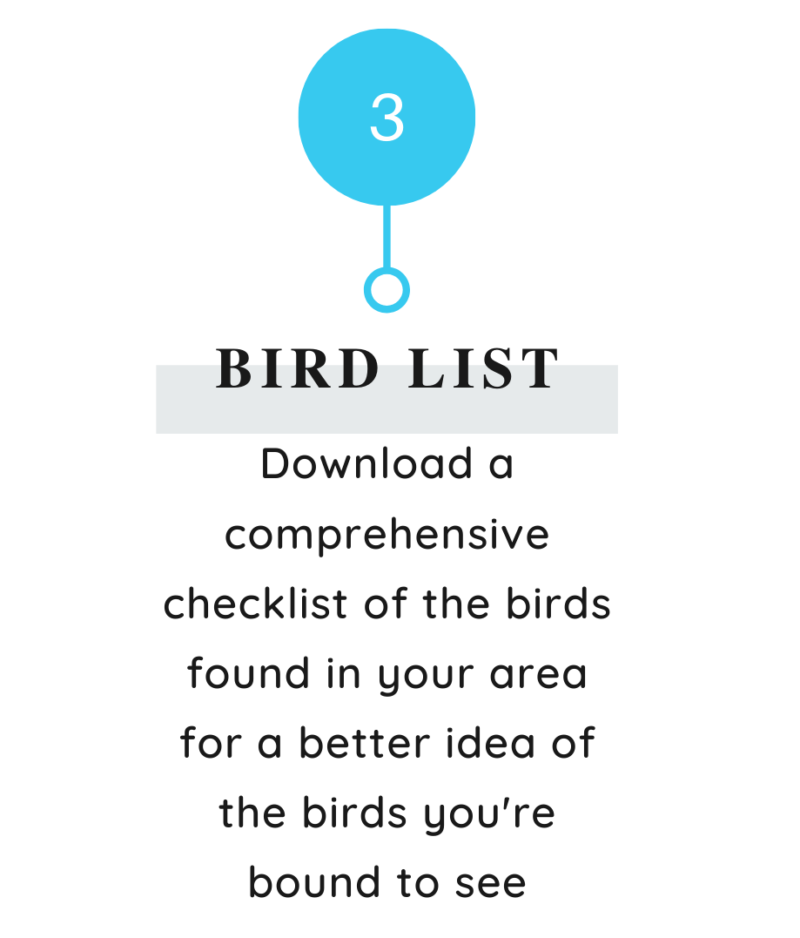
Having a list of the birds found in your local area will better help you focus on the birds you can learn closer to home.
Once you feel good about these birds, you can branch out to the tens to hundreds of other birds found in your region!
Plus, who doesn’t love the satisfaction of having a checklist and actually checking the box?? When you see a new bird, you can mark it off as see and add it to your life list – or, the total list of birds you’ve seen in your lifetime.
Pretty cool right?
Once you’ve acquired the tools you need to see and identify birds, you’ll start learning how to identify birds!
The five keys to bird identification are:
- Size and Shape
- Color and Pattern
- Behavior
- Habitat and Distribution
- Sound
Visit our Bird ID Page to learn more about the five keys to bird identification. You’ve got this!
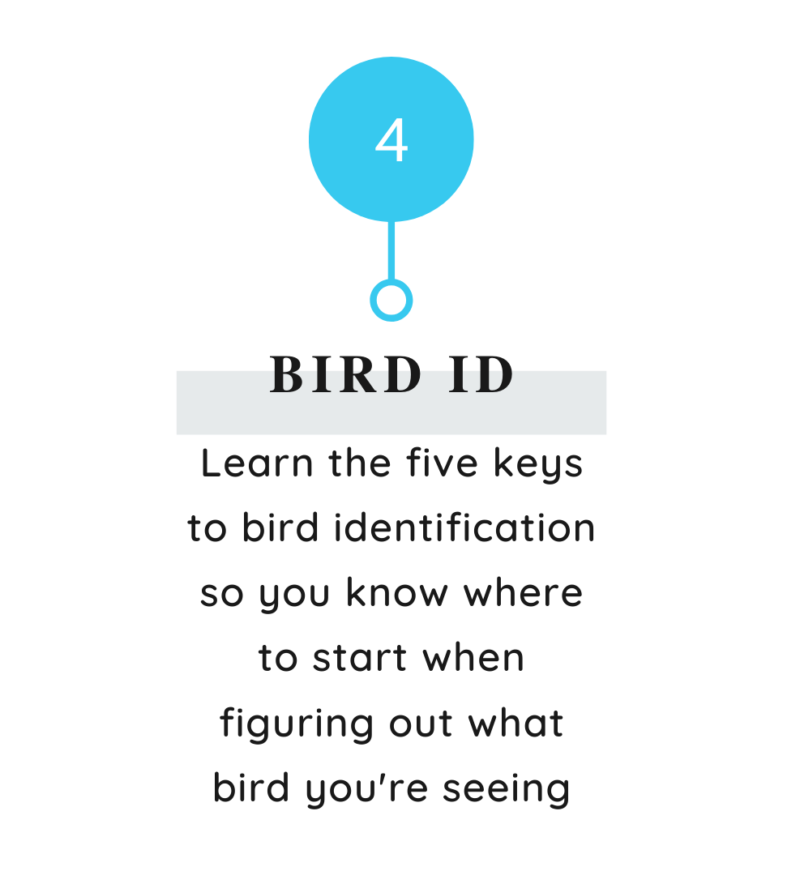
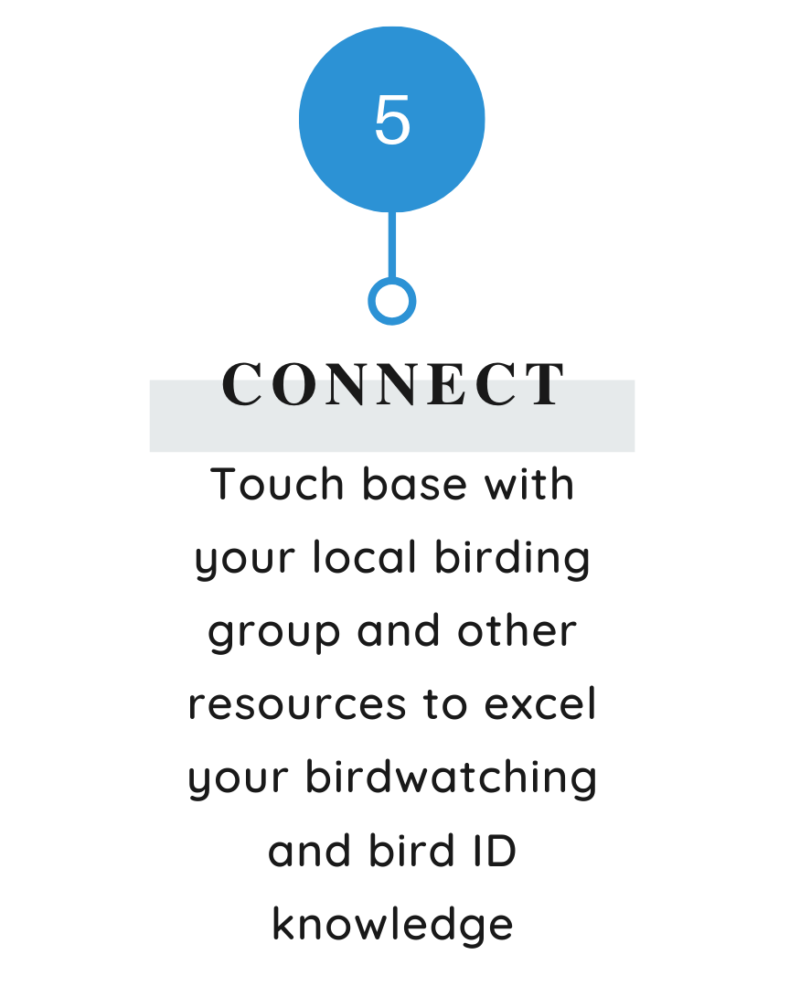
Connecting with other birders and people enthusiastic about seeking out new birds or simply going on a stroll with binoculars in hand is a treat.
The beauty of birding is that it can be at your own pace, in your own time. You can go out alone, or with a group of people. But, you’ll learn so much by conversing with those who might know a new bird or bird trick you haven’t yet learned!
Reach out to one or more of these organizations in your local area to inquire about meetups and walks:
- The Audubon Society local chapter
- Meetup birders group
- Local wildlife preserves, reserves, refuges, or parks
If you need a hand finding a local birding group with which to get involved, reach out to us and join our Facebook page!
